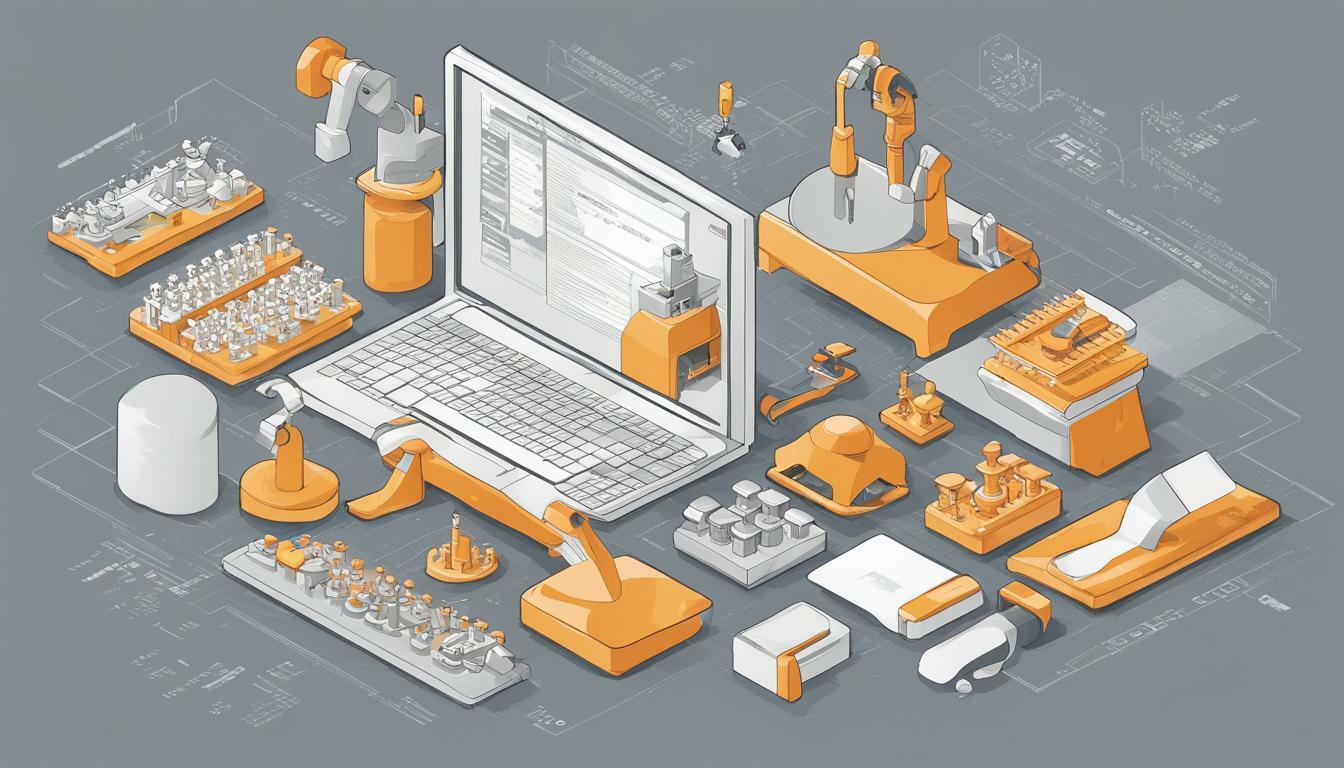
Creating clean and efficient code is a must for any software development project. However, maintaining code quality can be a challenging and time-consuming task, especially as the complexity of the codebase grows. This is where automated code refactoring comes into play.
Automated code refactoring refers to the process of improving code quality and readability through automated tools and techniques. By utilizing smart tricks and best practices, developers can streamline the code improvement process and create cleaner codebases.
Key Takeaways
- Automated code refactoring is crucial for maintaining efficient and clean codebases.
- Following code refactoring best practices is key to successful code optimization.
- Smart tricks and automation tools provide practical solutions for code quality enhancement.
Understanding Automated Code Refactoring
Code optimization is an essential part of software development as it ensures that the codebase is efficient, maintainable, and scalable. One of the most effective ways to achieve this is through code refactoring, a process of modifying existing code to improve its quality, readability, and performance. However, manual refactoring can be time-consuming, error-prone, and tedious. This is where automated code refactoring comes in, providing a more efficient and reliable way to enhance code quality.
Automated code refactoring involves using specialized tools to automate repetitive tasks such as renaming variables, extracting methods, and optimizing code structures. These tools follow established code refactoring best practices, ensuring that the refactoring process is consistent, safe, and reliable.
Code Optimization
Automated code refactoring enables developers to optimize their codebase by removing duplicate code, improving code clarity, and simplifying complex code structures. This not only improves the quality of the code but also makes it easier to maintain and scale in the future.
Code Refactoring Best Practices
Automated code refactoring follows established best practices to ensure that the codebase remains maintainable and scalable. Some of these best practices include:
- Breaking down complex code structures into smaller, more manageable components
- Eliminating code duplication and reducing code complexity
- Ensuring that code adheres to coding standards and guidelines
- Refactoring code early and often to prevent technical debt from accumulating
- Testing refactored code to ensure that it operates as intended
Following these best practices ensures that the refactoring process is consistent, predictable, and effective in improving code quality.
Smart Tricks for Effective Code Refactoring
Code refactoring is essential for maintaining clean and efficient codebases. However, it can be a daunting task, especially when dealing with large codebases. That’s where automated code improvement comes in handy. By implementing smart tricks and following code refactoring best practices, you can streamline the process and achieve better results.
Identifying Areas for Refactoring
Before making any changes to your codebase, it’s important to identify areas that require refactoring. Start by analyzing your code and looking for areas that are hard to understand, modify, or maintain. These may include long and complex methods, duplicated code, or inefficient logic. Prioritize these areas based on their impact on your system’s performance, maintainability, and scalability.
Refactoring Strategies
Once you have identified the areas that require refactoring, it’s time to implement changes. Here are some strategies to ensure efficient refactoring:
- Small and Frequent Changes: Refactor small sections of code frequently to avoid large and complex refactoring sessions. This approach makes it easier to track changes and ensures minimal impact on the system’s functionality.
- Refactoring Tests: Before implementing changes, create unit tests to ensure that the code still works as expected after refactoring.
- Code Review: Have a colleague or team member review your refactored code to get a second opinion and ensure that it adheres to code refactoring best practices.
- Automated Refactoring Tools: Use automated tools, such as ReSharper, to streamline the refactoring process and ensure consistency throughout the codebase.
Automated Code Improvement
The use of automated refactoring tools not only streamlines the code improvement process but also ensures that the codebase adheres to best practices and follows coding standards. Some popular automated tools include ReSharper, SonarQube, and CodeClimate. These tools identify areas for improvement and provide suggestions for clean and efficient code.
By implementing these smart tricks and code refactoring best practices, you can achieve a cleaner and more efficient codebase. Remember to prioritize areas for refactoring, implement small and frequent changes, and use automated tools for efficient code improvement.
Benefits of Automated Code Refactoring
Automated code refactoring offers numerous benefits, including enhanced code optimization and improved software development productivity. By utilizing automated refactoring tools, developers can quickly identify areas of code that require improvement and make the necessary changes, resulting in a cleaner and more efficient codebase.
One of the main advantages of automated code refactoring is that it leads to improved code quality and readability. By streamlining the code improvement process, developers can identify and fix potential errors more quickly, resulting in a more stable and reliable application.
| Benefits of Automated Code Refactoring | |
|---|---|
| Improved code quality | Automated refactoring ensures that code is optimized and free of potential errors |
| Enhanced software development productivity | By reducing the time spent on manual code maintenance and debugging, developers can focus on more important tasks such as creating new features and improving user experience |
Furthermore, automated code refactoring can also enhance software development productivity. By reducing the time spent on manual code maintenance and debugging, developers can focus on more important tasks such as creating new features and improving user experience. This can result in faster application development and deployment, ultimately improving the bottom line for businesses.
Overall, automated code refactoring is a crucial technique for optimizing code and improving software development productivity. By implementing refactoring into software development workflows, developers can create cleaner and more efficient codebases that are easier to maintain and scale over time.
Implementing Automated Code Refactoring in Your Workflow
Integrating automated code refactoring into your software development workflow can be a game-changer for creating an efficient codebase. Below are some best practices that can help ensure your refactoring process is seamless and effective.
Set up Refactoring Guidelines
It’s important to establish guidelines for your team to follow when it comes to code refactoring. This includes determining when and how often refactoring should take place, as well as prioritizing which sections of code need the most attention. By having a clear set of guidelines, you can ensure that everyone is on the same page and working towards the same goals.
Establish Code Review Processes
Another key factor in implementing automated code refactoring is establishing a code review process. This involves having team members review each other’s code to identify areas that could benefit from refactoring. This process can catch mistakes before they become bigger problems and ensure that everyone is following the established guidelines.
Ensure an Efficient Codebase
To make automated code refactoring as seamless as possible, it’s crucial to have an efficient codebase. This means having code that is easy to read and understand, with minimal complexity and duplication. If the code is clean and well-organized, then refactoring will be much simpler and faster.
By following these code refactoring best practices and integrating automated tools into your workflow, you can create a more efficient codebase and enhance the overall quality of your code. It may take some effort to establish these processes and guidelines, but the end result will be well worth it.
Conclusion
To sum up, automated code refactoring provides a powerful means of optimizing code and enhancing code quality. By following best practices and utilizing smart tricks, developers can achieve cleaner codebases with greater ease and efficiency. Automated tools can streamline the process and improve productivity, reducing time spent on manual maintenance and debugging.
It is essential for developers to incorporate code optimization into their workflow and establish guidelines for code refactoring. This requires setting up effective review processes and ensuring an efficient codebase that allows for seamless refactoring. By doing so, developers can reap the benefits of automated code refactoring and create better software solutions.
We hope this article has provided valuable insights into the world of automated code refactoring and its benefits. Remember to always prioritize code quality enhancement and optimize your code to achieve greater efficiency and productivity in your software development projects.
FAQ
Q: What is automated code refactoring?
A: Automated code refactoring is the process of restructuring existing code to improve its readability, maintainability, and performance. It involves making changes to the code without altering its behavior, using tools that analyze the code and suggest improvements.
Q: Why is automated code refactoring important?
A: Automated code refactoring is important because it helps to ensure cleaner codebases. By optimizing and restructuring code, it becomes easier to understand and maintain. It also leads to improved performance and reduces the chances of introducing bugs during future development.
Q: What are some smart tricks for effective code refactoring?
A: Some smart tricks for effective code refactoring include identifying and prioritizing areas that need improvement, breaking down large methods or functions into smaller, more manageable ones, and using automated tools to streamline the refactoring process.
Q: What are the benefits of automated code refactoring?
A: The benefits of automated code refactoring include improved code quality and readability, increased software development productivity, and reduced time spent on manual code maintenance and debugging. It also helps in creating a more efficient codebase that is easier to work with.
Q: How can I implement automated code refactoring in my workflow?
A: To implement automated code refactoring in your workflow, you can start by setting up refactoring guidelines and incorporating code review processes. It is also important to ensure that your codebase is well-organized and follows best practices, allowing for seamless refactoring. Be aware of potential challenges and pitfalls and regularly update your refactoring tools.







